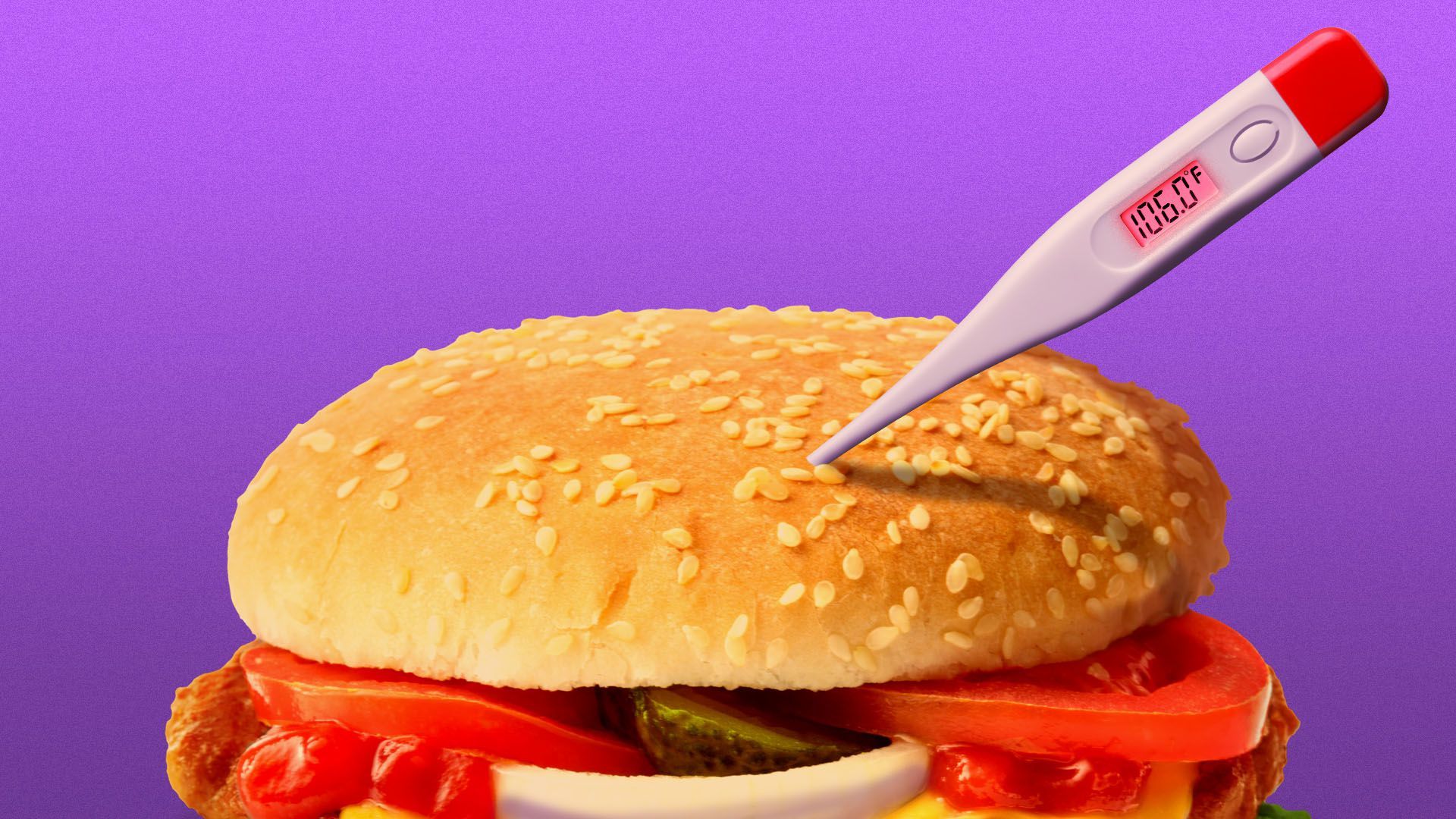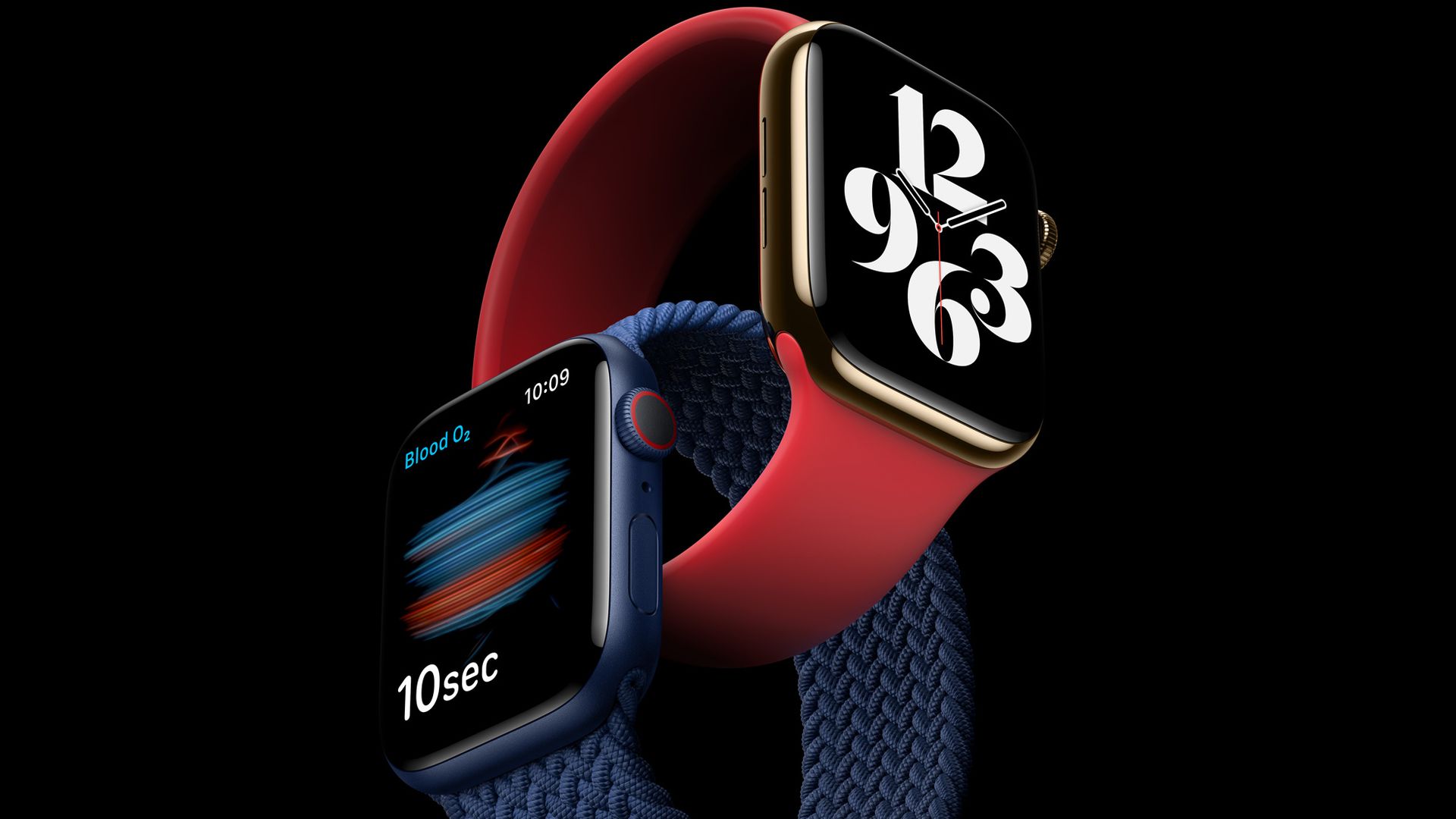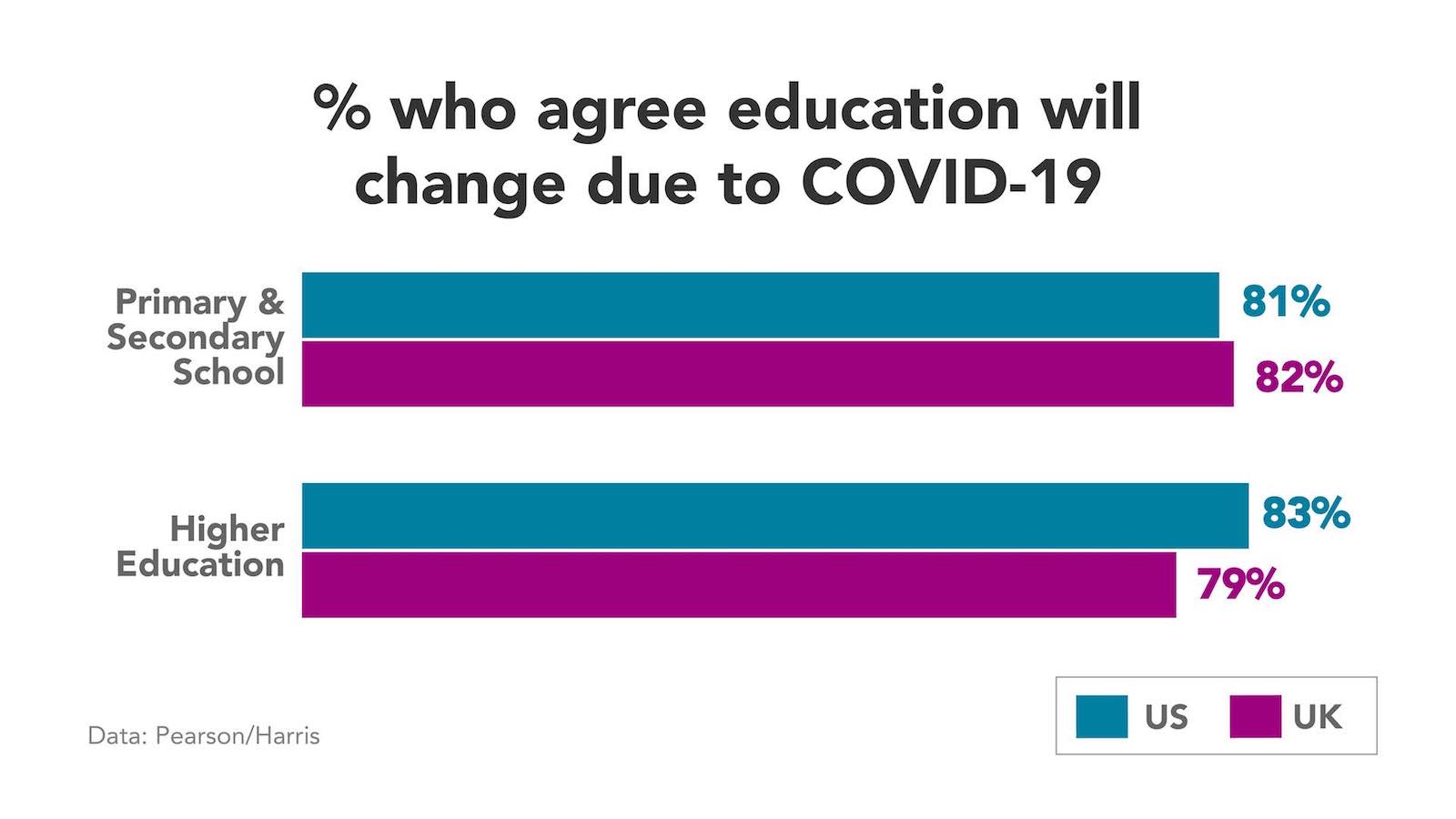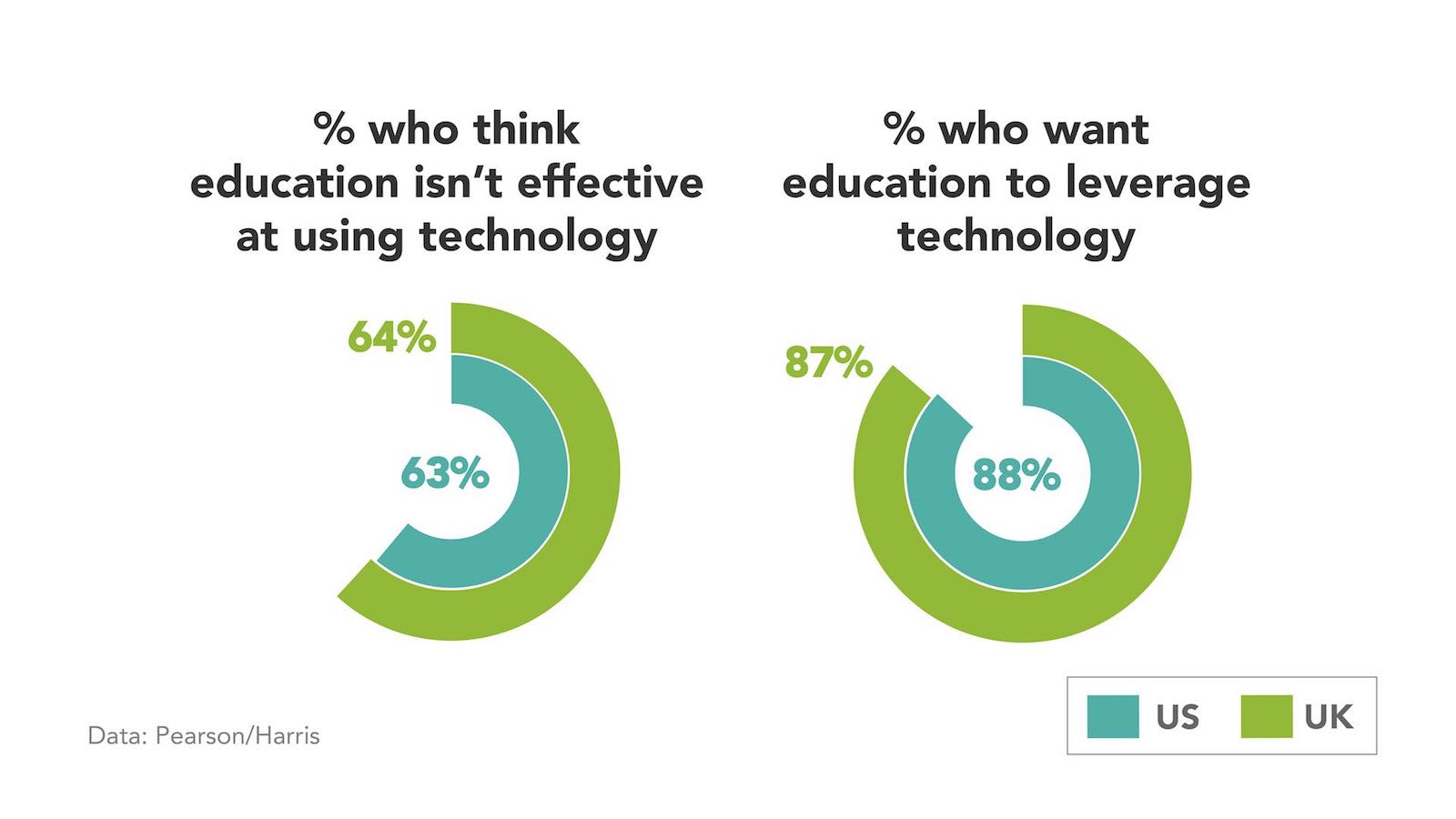| | | | | | | Presented By Pearson | | | | Axios Future | | By Bryan Walsh ·Sep 19, 2020 | | Welcome to Axios Future. This morning I'm thinking of a quote about the future from Supreme Court Justice Ruth Bader Ginsburg, who passed away last night at 87: "Real change, enduring change, happens one step at a time." Today's Smart Brevity count: 1,826 words or about 7 minutes. | | | | | | 1 big thing: The dwindling chances of eliminating COVID-19 |  | | | Illustration: Eniola Odetunde/Axios | | | | As the coronavirus pandemic drags into its seventh month in the U.S., it remains an open debate whether we should aim for the elimination of COVID-19 — and whether it's even possible at this point. Why it matters: This is the question underlying all of the political and medical battles over COVID-19. As both the direct effects of the pandemic and the indirect burden of the response continue to add up, we risk ending up with the worst of both worlds if we fail to commit to a course. The big picture: It may not seem like it at a moment when the U.S. is still recording tens of thousands of new COVID-19 cases a day and approaching 200,000 deaths, but the ultimate goal of the pandemic response has been the elimination of the virus. - From the start, however, there's been a gap between that goal and what the government and many Americans are actually willing to do.
- And we're not really on a path to the alternative either: a more targeted approach that protects vulnerable people but allows others to resume their lives.
Of note: Elimination is defined as the absence of sustained endemic community transmission in a country or geographic area. Sporadic cases may still occur, but they can be quickly snuffed out. No country has yet successfully eliminated COVID-19, though some like New Zealand have come close. - But New Zealand's location means it is better able to seal itself off, and even there, a new outbreak caused by imported cases in August forced the country back into lockdown.
- "Is it worth it?" asked Simon Thornley, an epidemiologist at the University of Auckland who has argued against an elimination strategy. "To me it's a resounding no."
- However, Thornley does recommend measures that are strong enough to protect hospital and intensive care capability, as well as the most vulnerable people like the elderly, while also being loose enough to permit a return to work and school.
Be smart: As the direct health effects of the pandemic have compounded, so have the indirect costs of pursuing an elimination strategy. - A recent study by the OECD found the economic loss from closures could reach $14.2 trillion over the next 80 years in the U.S. alone, growing to almost $28 trillion if the closures extend another three months.
What they're saying: "Suppression to near zero should be possible in countries with reasonably strong public health systems," says Jonathan Quick, managing director for pandemic response, preparedness and prevention at the Rockefeller Foundation. - But, he adds, "the economic and resulting health and social costs of elimination would outweigh the benefits" for most countries, including the United States.
Reality check: The U.S. is not on a path for either the near-zero suppression — getting cases down to a much more manageable level — of COVID-19 or the elimination of the disease. - Political battles over mask rules and social distancing ensured that the national case count didn't drop that much during the summer, when the virus should have been in a lull — and now "we're starting to see a real buildup of transmission," says Michael Osterholm, the director of CIDRAP at the University of Minnesota.
As a result, the U.S. is reaping the results of a halfway, half-hearted approach to COVID-19, one that has left the burdens of the pandemic — both direct and indirect — falling on those least able to bear them. - And it's not likely to end any time soon. Bill Gates recently said that in his most optimistic timeline, life doesn't return to normal in rich countries until 2022, which would mean we're not even halfway through this trial.
The bottom line: Both all-out elimination and a more laissez-faire approach come with costs. But by refusing to definitively pick a path, the U.S. is maximizing pain and minimizing benefits. |     | | | | | | 2. How the American diet worsens COVID-19 |  | | | Illustration: Sarah Grillo/Axios | | | | Americans suffer from high levels of obesity — a disease that has made us more vulnerable to the coronavirus. Why it matters: If the U.S. is going to make itself more resilient to the coronavirus, as well as other deadly health conditions, some experts argue we need to rethink the food system that has helped leave too many people dangerously overweight. By the numbers: 42.4% of American adults had obesity as of 2018, up from 30.5% in 2000. - A recent meta-analysis found people with obesity who contracted COVID-19 were 113% more likely than people of healthy weight to end up in the hospital, 74% more likely to be admitted to the ICU, and 48% more likely to die.
What they're saying: "It's clear that COVID-19 is connected to food," Nancy Roman, CEO of Michelle Obama's nonprofit Partnership for a Healthier America (PHA), told Axios. Still, Roman does see some positive shifts brought about by the pandemic, including the rapid growth of online grocery delivery. - 45 states are participating in a USDA pilot program that allows people to use their food stamp benefits for online grocery purchases, which could help the more than 23 million Americans who live in food deserts find healthier produce.
- But Roman worries the shift to online buying will leave some Americans vulnerable to targeted ads for unhealthy food. "A person of means who likes to have a kale smoothie would be optimized for it, but a low-income person eating at McDonalds or Popeyes would be optimized for that," she says.
Of note: In May, PHA launched its COVID-19 Fresh Food Fund in Denver, working with the city and other partners to provide 600,000 servings of fresh fruit and vegetables over the following three months, with plans for another 1.2 million servings through the next six months. The bottom line: COVID-19 and obesity represent a pandemic on top of an epidemic, and they both deserve attention. |     | | | | | | 3. New Apple Watch heralds remote health monitoring |  | | | The new Apple Watch Series 6. Photo: Apple | | | | The newest version of the Apple Watch is part of a slew of devices that enable people to monitor their health away from a doctor's office. Why it matters: The COVID-19 pandemic has accelerated a shift to health monitoring into the home, and companies are rushing to meet the demand. What's happening: Apple on Tuesday announced its Watch Series 6, with a focus on the device's health capabilities. - Already able to detect heart rate, perform an electrocardiogram and track physical activity, the new version can now determine blood oxygen levels through LED clusters and photodiodes.
- Blood oxygen saturation can be a useful indicator of health, especially during the pandemic. Many severe cases of COVID-19 are marked by alarmingly low blood oxygen levels, even before patients begin experiencing respiratory distress.
Details: The new Apple Watch is one of many remote health monitoring devices being rolled out by tech and health companies alike. - The change is being driven by more accurate devices as well as a shift in patients themselves, who increasingly want to optimize wellness, not just avoid illness.
- "This is a golden moment for distributed medicine and at-home diagnostics," says Siddarth Satish, the CEO of Gauss, a machine-vision startup that developed the first completely at-home COVID-19 test with the biotech company Cellex.
Yes, but: It's still not clear exactly how many of these devices "ultimately fit into a user's care continuum," notes Erin Brodwin in STAT News. The bottom line: I still bought one. |     | | | | | | A message from Pearson | | Education is forever changed | | |  | | | | From the U.S. and beyond, most people believe COVID-19 will reshape education for years to come. Key numbers: - 81% in the U.S. and 82% in the U.K. say primary and secondary education will change.
- 83% in the U.S. and 79% in the U.K. say higher education will change.
More from Pearson's new survey. | | | | | | 4. The immigration deficit |  | | | Illustration: Sarah Grillo/Axios | | | | America's cities are facing a historic shortage of two vital resources: money and immigrants, my Axios colleague Felix Salmon writes. Why it matters: Cities drive American economic growth, and immigrants drive cities. The coronavirus pandemic has effectively stanched the main source of talent that municipal economies have long relied upon. The big picture: As Axios' Stef Kight reports, COVID-19 has slammed the door on highly skilled foreign workers — and the restrictions and bottlenecks may outlast the pandemic, especially if President Trump wins re-election. Economists warn that could slow the U.S. recovery and reduce competitiveness. By the numbers: The U.S. issued more than 61,000 skilled visas in January. That number fell to just 494 in April and remained very low through July. Don't expect the numbers to pick up meaningfully anytime soon. - New York alone has some 3.1 million immigrants, who fill 45% of the city's jobs, according to the Mayor's Office of Immigrant Affairs. But that population was declining even pre-pandemic. Tougher immigration restrictions caused a decline of 75,000 immigrant residents in 2018.
- Immigrants contribute $232 billion to New York City's GDP and own more than half of its businesses.
Context: New York's recovery from the current crisis is going to be based on an influx of not-wealthy creatives and young professionals replacing the older, richer, more established people moving out. - If the newcomers require less space per person than the people leaving, then so long as landlords don't leave apartments empty, the population will rise and the city will rebound.
- The catch: Historically, newcomers to New York and other cities have come from abroad. With intra-American migration slowing, it's not clear where else the reinforcements will come from.
The bottom line: The U.S. needs a lot of immigration if it's to achieve its potential and thrive in the coming century. At the moment, thanks to the pandemic, the prospects for such immigration have never been grimmer. |     | | | | | | 5. Worthy of your time | | No one should "colonize" space (Marina Koren — The Atlantic) - The idea that America has a "manifest destiny" to go to the stars doesn't jibe with the realities of space exploration today.
The brain-computer interface is coming — and we are so not ready for it (Paul Tullis — Bulletin of the Atomic Scientists) - A fascinating article that looks at the frontiers of neurological interfaces and the knotty ethical questions the science is already beginning to raise.
Using drones to disrupt the status quo (Austin Choi-Fitzpatrick — MIT Press Reader) - Drones came to prominence first as a tool of power, but activists are now using them to turn the tables on the government.
AI ethics groups are repeating one of society's classic mistakes (Abhishek Gupta and Victoria Heath — MIT Tech Review) - If the burgeoning field of AI ethics is meant to represent all of humanity, then those doing the work need to come from all of humanity.
|     | | | | | | 6. 1 fun thing: Detecting counterfeit whisky |  | | | Personally, I'd be happy to drink this now, counterfeit or not. Photo: DEA/G.P. Cavallero | | | | Physicists have figured out a way to determine the authenticity of rare whisky without opening the bottle, by using laser lights. Why it matters: The demand for rare Scotch whisky has been rising in recent years, but so have reports of counterfeits. The new technology could help determine whether your four-figure single malt is actually rotgut — before you buy. What's happening: In a recent paper, researchers at the University of St. Andrews in Scotland (obviously) described a method of using spectroscopy on a whisky bottle, as Jennifer Ouellette reported in Ars Technica. - Scientists can shine a laser light into the whisky bottle, which breaks the light into a spectrum of wavelengths that correspond to different chemical compounds.
- Those chemical compounds can be used to help determine the provenance of the whisky.
- Because a glass bottle can produce a large spectral signal itself, interfering with the results, the researchers shaped the laser light into a ring, which reduced the noise from the bottle.
Of note: The Scotch Whisky Research Institute in Edinburgh (also obviously) is experimenting with portable spectrometers that workers could use to authenticate rare whiskeys. Background: A 2018 study found a third of vintage Scottish whiskies tested in a lab were outright fakes or not from the year their labels indicated. The bottom line: And that's why I drink bourbon. |     | | | | | | A message from Pearson | | What over half of Americans think about education and tech | | |  | | | | Over 80% of people in the U.S. and U.K. want education systems to take better advantage of technology to help students of all ages learn. The reason: Over half of those surveyed believe education is less effective at using technology than other industries, Pearson's Global Learner Survey reports. | | | | | | Axios thanks our partners for supporting our newsletters.
Sponsorship has no influence on editorial content. Axios, 3100 Clarendon Blvd, Suite 1300, Arlington VA 22201 | | | You received this email because you signed up for newsletters from Axios.
Change your preferences or unsubscribe here. | | | Was this email forwarded to you?
Sign up now to get Axios in your inbox. | | | | Follow Axios on social media:    | | | | | |













